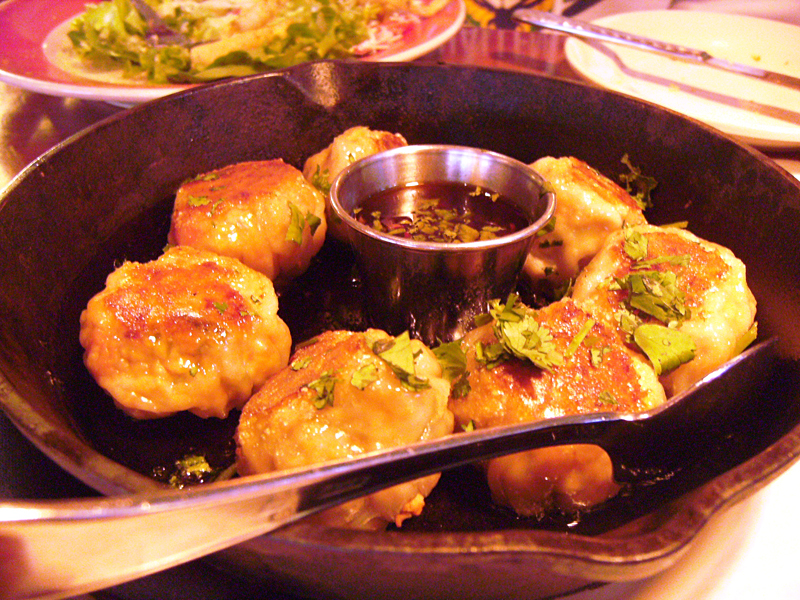c Siiri Sampson 2011.Like Homer Simpson and doughnuts, the sushi train mesmerizes and tricks me into grabbing one of everything.Unagi, tobiko, tamago, oh my! What is it that makes the sushi-train concept so utterly intriguing to children and adults alike? How is it that having your food served to you via conveyor belt somehow makes the whole meal more fun, even if food that’s supposed to be hot is cold and food that’s supposed to be cold is warm? While we may never uncover the secret behind the sushi train’s transcontinental appeal, we have uncovered a fairly new eatery that’ll give your chopsticks a run for their wasabi (wait–what?!).Just behind the massive Safeway that dominates almost an entire city block in downtown Bellevue is the unpretentious Sushi Maru, at 205 105th Ave. N.E. (seriously, what defunct restaurant was there before?). From the outside, it still wears a modest, pancake-house-esque exterior, disguised only by the packed parking lot that surrounds it. It’s clear upon entry that the owners saved their cash money for what really matters–the interior and the ingredients. As much as you might hate to admit it, the atmosphere you eat sushi in is extremely important. We’re talking about raw fish here, people. You’re not going to put a slab of uncooked squid or salmon fillet in your mouth if you’re sitting in a dump or have flies circling your head, right? (I would hope not.) The facelift given to Sushi Maru is a little bit retro and a little bit Japanese minimalist. Quite frankly, it’s nice–for a sushi-train joint. The staff is welcoming, polite, attentive, and quick–things we like to see in any restaurant.c Siiri Sampson 2011.I’m full, thanks. Oh, wait, you meant the gyoza? I’ll take six, thanks. WHAT?!But you’re really curious about the on and off-belt menu, right? Well, there are pros and cons to eating at a place like this. Pros: quick service, easy pricing and menu layout, decent food, lots of options, and you don’t really have to wait for a server to come by your table if you want something. Cons: food temperature is never quite what you want, you don’t know how long something’s been sitting out, not everything has a tiny sneeze shield to protect it, and sometimes something looks better as it whizzes by than it actually is when you taste it. But that’s part of the rush–the gamble you take when you hop aboard the sushi train. Of course there’s more to offer than just what’s passing by your table at eye level. They have a wide selection of tataki, udon, cooked appetizers, and desserts for everyone. We tried a smattering of on-belt selections, and here are the yays and nays:Unagi ($2.50): BBQ eel, just what you expect, not too fatty, good crispiness. Get this.Orange chicken ($2.50): Part of the non-sushi belt offerings, this was really dry and had most likely been sitting there a while. Pass.Baked mussels with tobiko ($1.50): Large, good flavor, but not sure how long they’d sat there begging for a new home before I came along. The tobiko (flying fish roe) was good, not overpowering. If you like mussels, do it.Spicy California roll ($2.00, fake crab, avocado, carrots, cucumber): Blah. Pass on this. It’s boring, boring, boring, and the crab was the fake “made-from-fish” kind. Gyoza ($1.50): Pork-filled, room-temperature, and fried, these had potential. I recommend you order them from a waiter and have them made to order. They were deep-fried, which is the only downside. Still, get this.Sesame balls ($2.00): Filled with a slightly sweet and salty red-bean paste, these are the benchmark of any sushi train eatery. Sushi Maru’s balls were room temp. Sad, because they’re way better right out of the fryer. Still, they’re sesame balls. Get two of these.c Siiri Sampson 2011.If it were legal, I would marry the sesame ball.The other things we tried were pretty much standard, not bad, but not great. Sushi trains are a dime a dozen in the area, and this one stacks up pretty well against its competitors. The prices are about $.50 higher per plate than other nearby contenders, which means your check adds up way faster than you might expect. For lunch we spent $16 (including tip), and we were actually paying attention to the color of plates we pulled. While it might not be the cheapest fish in town, do you really want to save money when you’re munching raw mackerel? We think not.
More Stories From This Author
For 50 years, Zeke’s off US 2 has served delicious burgers
It’s been a popular pit stop in Gold Bar for skiers and hikers, and the same family still runs it.
By
Evan Thompson • June 6, 2019 11:05 am
With ‘Game of Thrones’ ending, it’s time for a proper feast
How to make a meal inspired by the Lannisters’ and Starks’ world, fit for the King in the North.
By
Ben Watanabe • May 15, 2019 1:30 am
Stash Box: 2016-2019
Time to roll one for the road …
By
Meagan Angus • February 26, 2019 3:15 pm





